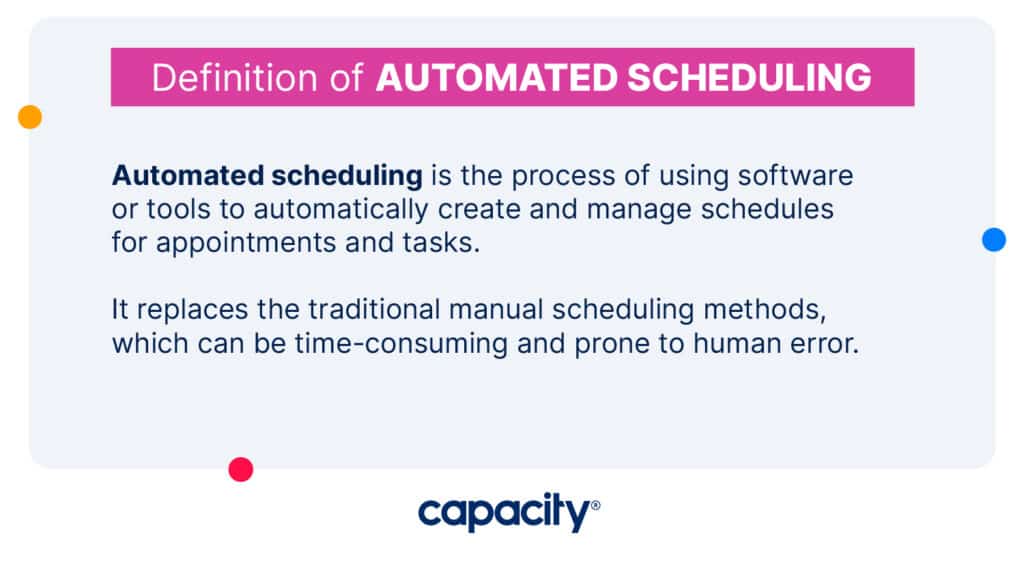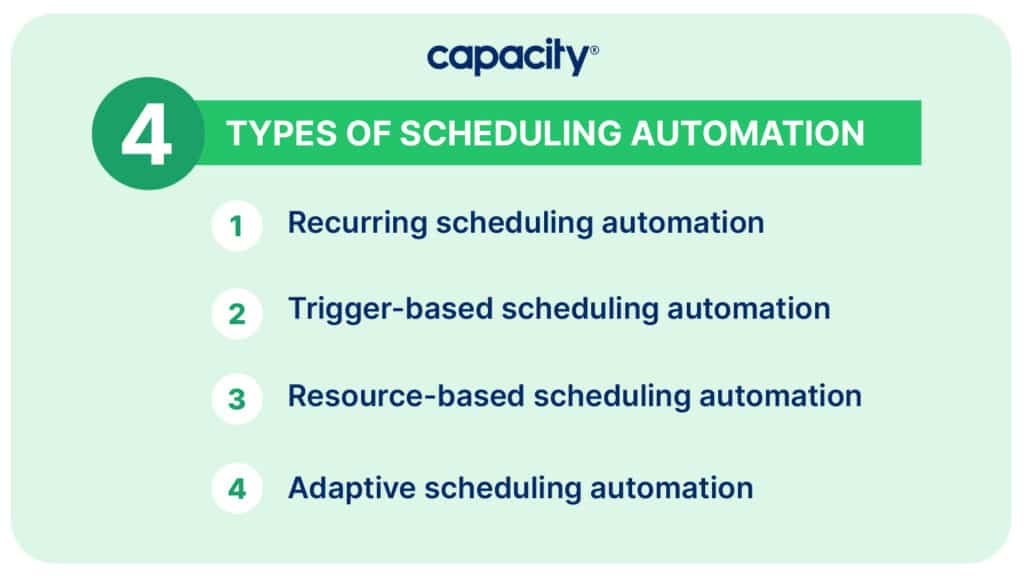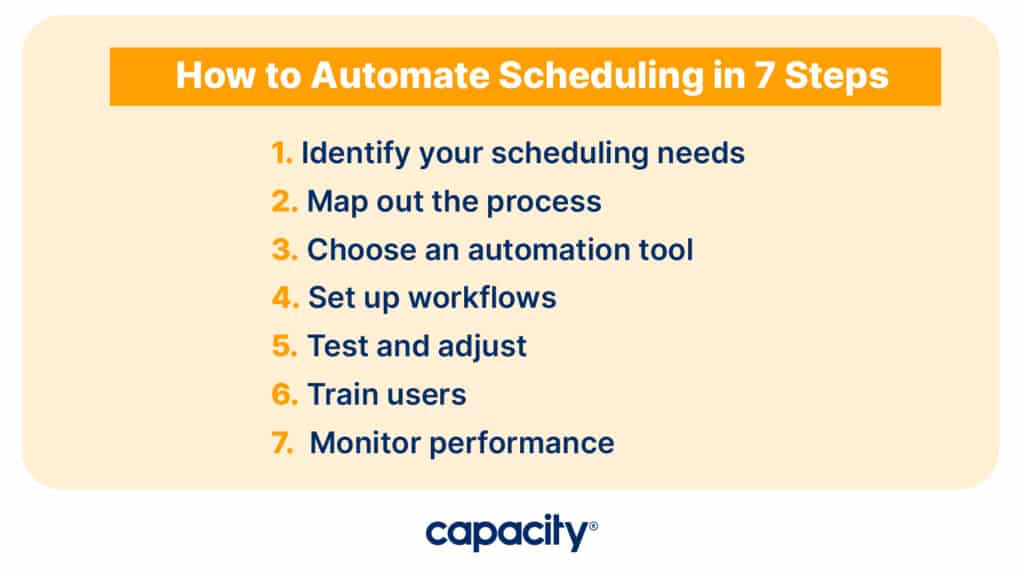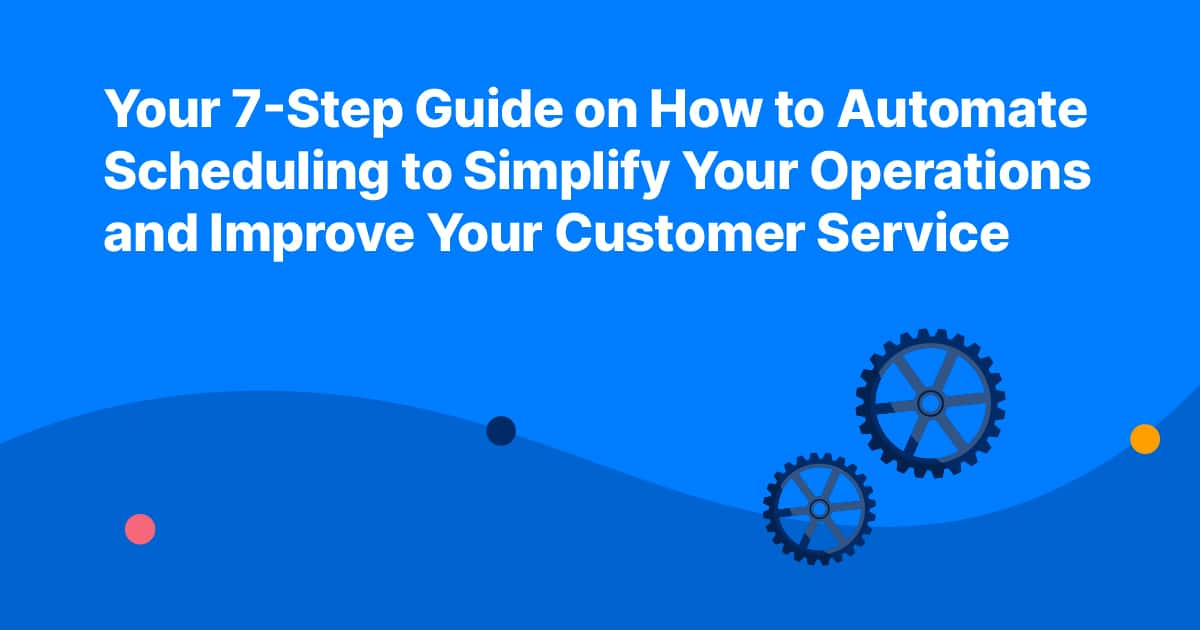When it comes to knowing how to automate scheduling and workflow processes for your business operations, sometimes our brains need a little help. So try this:
Think of your business as a factory. The inputs are resources (like your people, materials, and equipment). And then the outputs are the finished products you hope to deliver. But just like any factory, you need a few key pieces of machinery to run smoothly.
To automate the scheduling and workflow processes, think of these as an assembly line: with resources coming in at one end and products shooting out at the other. Automation keeps the assembly line moving at a steady pace, taking care of all the small tasks involved in the production process.
Now imagine this assembly line is powered by robots instead of workers. (For me, I picture Rosey from the Jetsons.) As long as resources are coming in from one end and products are shooting out the other, the robots can take care of everything else. You don’t have to worry about scheduling tasks and ensuring there are enough resources to get the job done.
It’s all handled automatically by Rosey the Robot.

Automate Your Work
Capacity’s enterprise AI chatbot can help:
- Answer FAQs anytime, anywhere
- Find relevant documents within seconds
- Give surveys and collect feedback
So now you have a good mental model for understanding how automation works in business operations. Just like an assembly line, it takes care of all the small details without human intervention. And with modern technology, you can set up automated systems that take care of everything from creating new tasks to tracking progress and providing feedback on performance.
Now, before we learn how to automate scheduling, let’s make sure we’re all clear on exactly what we’re talking about.
What is automated scheduling?

Automated scheduling is the process of using software or tools to automatically create and manage schedules for appointments and tasks. It replaces the traditional manual scheduling methods, which can be time-consuming and prone to human error.
Automated scheduling tools use algorithms and data analysis to create schedules from things like availability, priority, and time requirements. By automating scheduling, you can streamline your operations and improve customer service by reducing wait times and avoiding double bookings.
What’s more, automated scheduling can give you some seriously valuable insight into your employee productivity and workload. Because it runs on an algorithm, not human biases, you get the most accurate picture of your workforce and customers and the most logical schedule through automation.
Scheduling automation has a massive range of use cases across a bunch of industries, but of course, the most popular use is scheduling meetings and appointments. It can help you save time and increase efficiency by automating the scheduling process, reducing the need for back-and-forth emails or phone calls. And it can minimize schedule conflicts and improve comms since it’s a centralized system for managing schedules.
4 Types of scheduling automation
As mentioned, there are a ton of use cases, but here’s a look at the four most popular types of scheduling automation to help you boost your business ops efficiency.

1. Recurring scheduling automation
This is when you set up a schedule to repeat at regular intervals. For instance, you might set up a weekly meeting at the same time every week without you needing to manually schedule it every time.
2. Trigger-based scheduling automation
This type of automation occurs when an action or event triggers a scheduled task. For example, you could set up an email to be sent to a customer as soon as they complete a purchase on your website.
3. Resource-based scheduling automation
This type of automation involves scheduling resources, such as equipment or employees, based on availability and demand. For example, a restaurant might use resource-based scheduling automation to assign servers to tables based on how busy the restaurant is.
4. Adaptive scheduling automation
This type of automation uses machine learning algorithms to adjust real-time schedules based on changing conditions. For example, an adaptive scheduling system might reschedule a delivery truck if there’s a traffic jam on the planned route.
How to automate scheduling in 7 steps

So how do you get started? Great question! Here are seven steps to help you know how to automate scheduling:
1. Identify your scheduling needs
The first step to automating your scheduling is determining what type of schedule you need and which tasks you want to automate.
2. Map out the process
Once you know what tasks you want to automate, create a flowchart or diagram outlining the steps in the process. This will help you think through how everything should fit together and how best to set up automation triggers.
3. Choose an automation tool
Next, choose a tool or platform that offers automated scheduling capabilities that meet your needs. There are several options on the market, so be sure to compare features and capabilities before making your decision.
4. Set up workflows
Using your chosen automation tool, set up workflows to trigger the tasks you outlined in your process map.
5. Test and adjust
Before going live with the automated scheduling system, test it out to make sure everything is working correctly. This will let you ID any issues or bugs and make adjustments before going live.
6. Train users
Once everything is set up and tested, train users to use the new automated scheduling system. Make sure everyone is comfortable with how it works and knows their responsibilities in maintaining the system.
7. Monitor performance
Finally, monitor the performance of your automated scheduling system regularly to ensure that it’s meeting your needs and performing as expected. With regular monitoring, you can spot issues early and make necessary adjustments.
Automating your scheduling doesn’t have to be complicated. When done right, it can help simplify your operations and improve your customer service. By following these seven steps, you can easily set up an automated scheduling system that will save you time, energy, and resources in the long run.
Want to give automation a shot in your business operations? Try Capacity for free or schedule a demo now!





